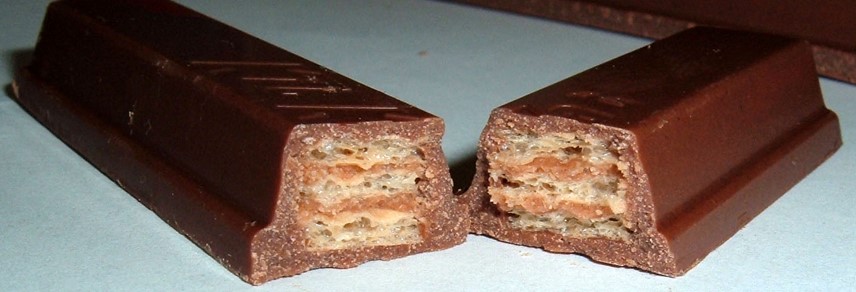
COPYRIGHT CLAIMS
Most well-known brand products are recognised by one distinctive feature or colour, such as Christian Louboutin’s pronounced red soles or Tiffany & Co.’s classic Tiffany blue.
These aspects are linked to consumer identification and many brands rush to win trademark agreements over the uniqueness of their product to avoid competing with copies. But copyright registration of the shape of a good proves to be more complicated than merely proving customer recognition.
Nestlé’s recent failure to trademark the shape of their four-fingered chocolate bar, KitKat, in the UK calls into question the distinctiveness of its appearance without the aid of pictorial markers. Competing brand Cadbury opposed the trademark claim in 2010, following KitKat owner Nestlé’s resistance to Cadbury’s case to trademark Pantone 2685c as their shade of purple. Although the shape of the chocolate-covered wafer bar precedes its current KitKat name, European courts deemed that it is not distinctive enough and that consumers are still more influenced by the red-and-white logo rather than the shape alone. The opaque packaging that does not reveal its shape along with the fact that Nestlé does not currently promote the shape as a sales tactic further develops this year’s decision against the trademark claim.
London Taxi Company (LTC) encountered a similar shape dispute against rival Frazer-Nash’s electric Metrocab that presented a comparable machine to the TX4, LTC’s latest version of the Hackney carriage. Although these black cabs have been operating since 1899 and has long become a symbol of London, the courts deemed the shape as devoid of distinctive features and merely a variation of the typical automobile.
While thresholds for trademarking shapes is high, as courts believe it monopolizes the market and grants comparative advantage over competing manufacturers, it is not impossible to win a case; both Toblerone’s triangular prism and Nestlé’s Walnut Whip whirl-shaped cone are protected. These unconventional marks such as shapes, sounds and smells gives rise to conceptual problems that are usually not encountered with trade names, logos and colours. Once demonstration of consistent use for an extended period of time and distinctiveness of the product is approved, trademark registrations could be acquired. However, policies regarding trademark protection varies across the globe and while Nestlé claims a case within the UK, they have developed a separate case for a Europe-wide trademark of the same nature.



